
A voter guide for electing the Swiss parliament

On October 20, Swiss citizens will elect a new parliament. The exercise of casting votes can be complicated because the electoral lists are not set in stone but can be modified.
In many countries, elections are quite simple. Indeed, the electoral lists are said to be “closed”, i.e. it is impossible to modify them. Voting therefore simply consists of dropping a piece paper containing the favourite candidate or party into the ballot box.
In Switzerland, things can quickly become complicated, as lists can be modified in several ways. swissinfo.ch presents different options available for those wishing to exercise their democratic responsibility.
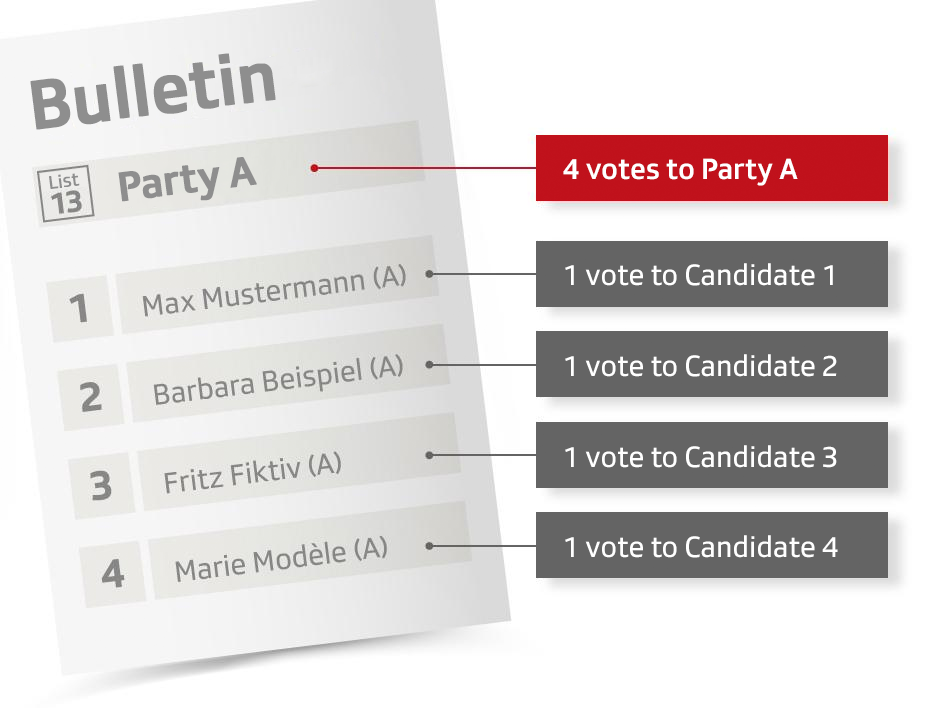
Consider a fictitious Swiss canton that is allocated four seats in the House of Representatives. The ballots may therefore contain a maximum of four names of candidates. If a party’s list is entered as it stands, it receives four votes, one for each candidate on the list.
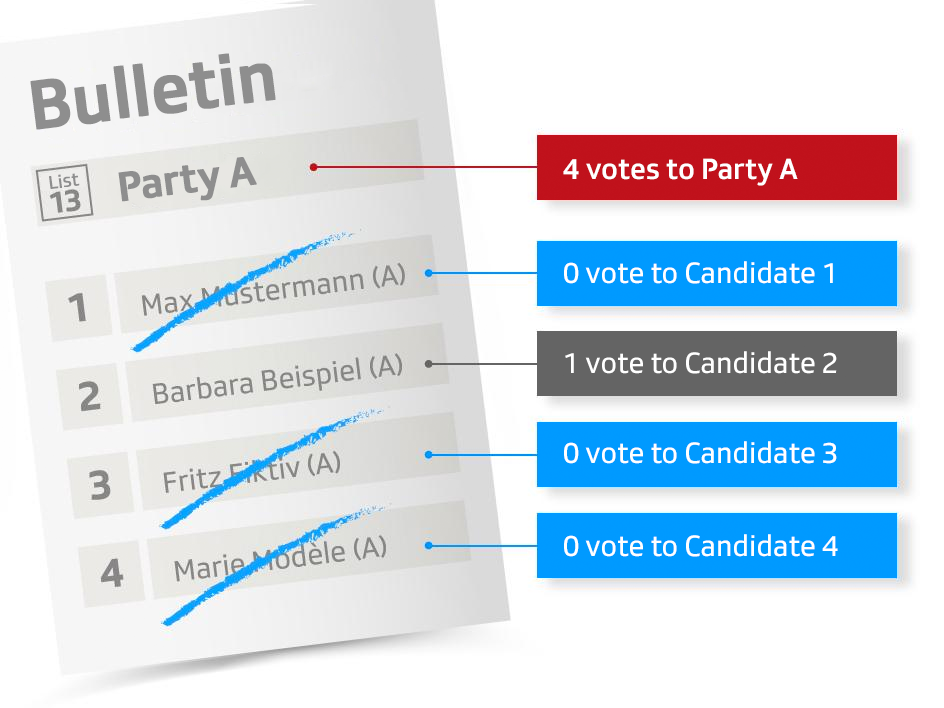
Candidates whose names have been crossed out naturally receive no votes. The party list still receives four votes, as if it had been complete.
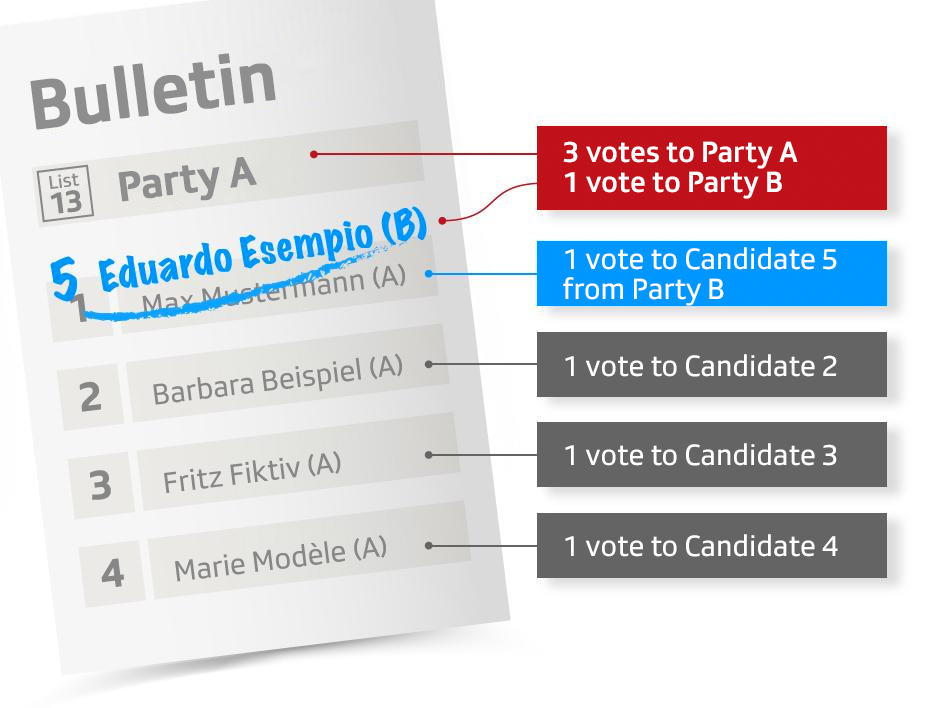
A “mixture” is when a candidate on a list is crossed out and replaced by a candidate from another party. The party on the original list then loses one vote, the party of the added candidate gains one vote.
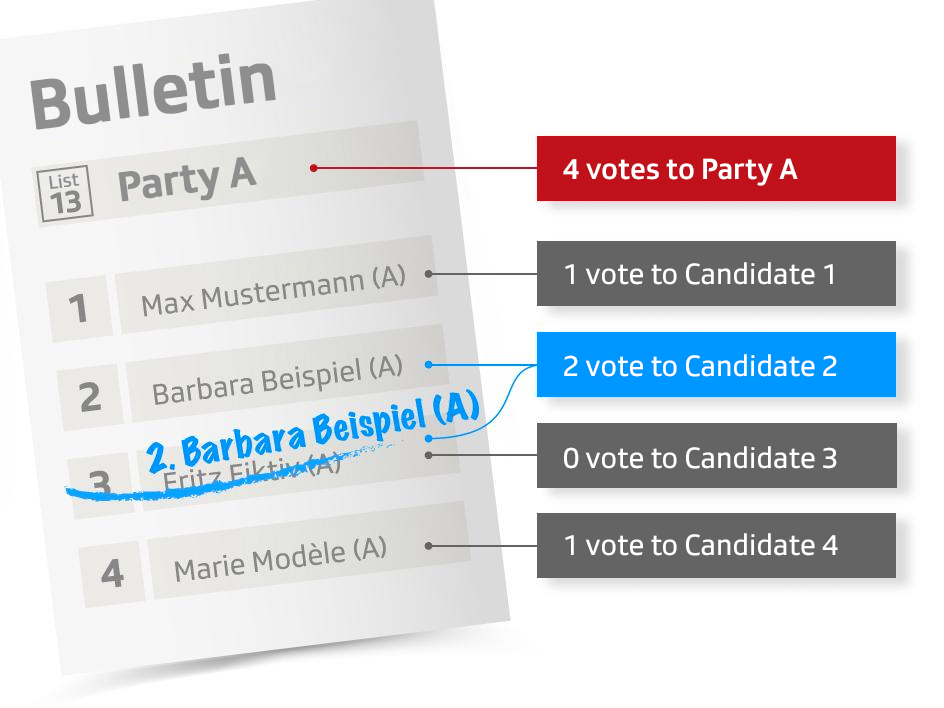
If you want to give additional support to a candidate, you can write their name twice by striking out the name of another candidate of the same party, who lose one vote. However, the total number of votes for the party does not change.
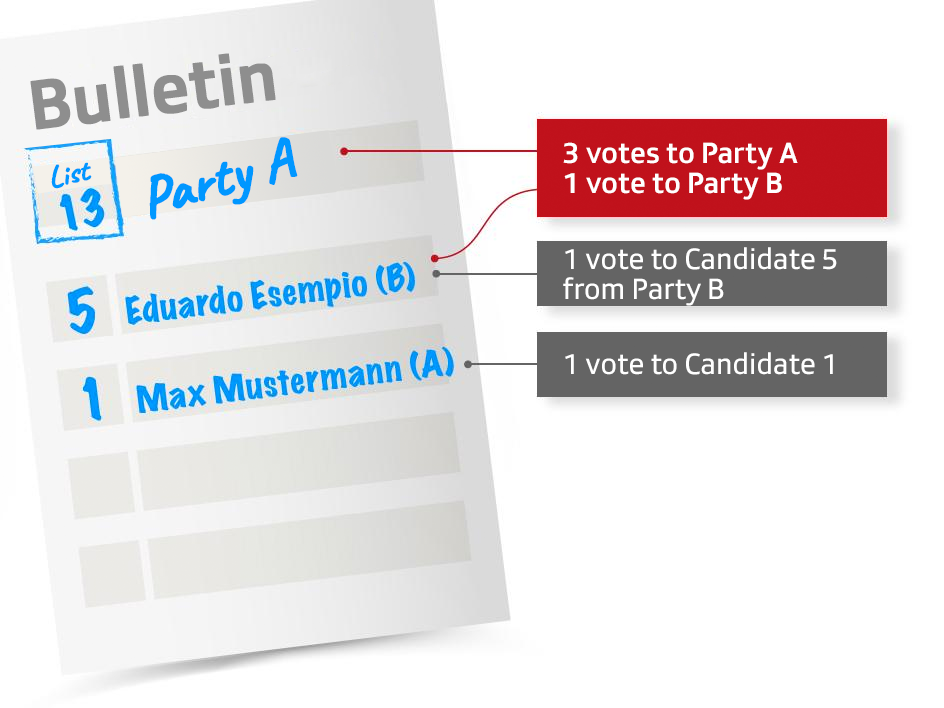
The voting material also contains an “empty list”. It can include the name of an existing party list and, below it, the names of the candidates you prefer. Empty spaces in the list still bring votes to the designated party. Warning: the list is invalid if no candidate’s name is indicated.
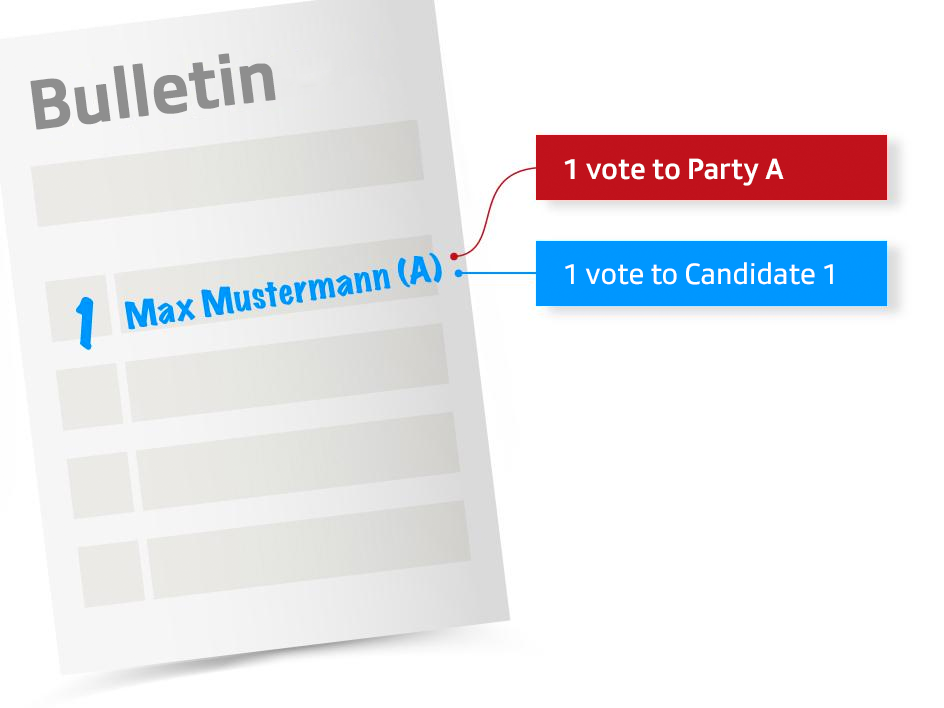
It is possible to fill in a blank list with selected candidates. In this case, the spaces left blank do not bring any votes to any party. Each party receives votes equivalent to the number of candidates on the list.
One last general remark: only one sheet can be submitted per voter.

In compliance with the JTI standards
More: SWI swissinfo.ch certified by the Journalism Trust Initiative














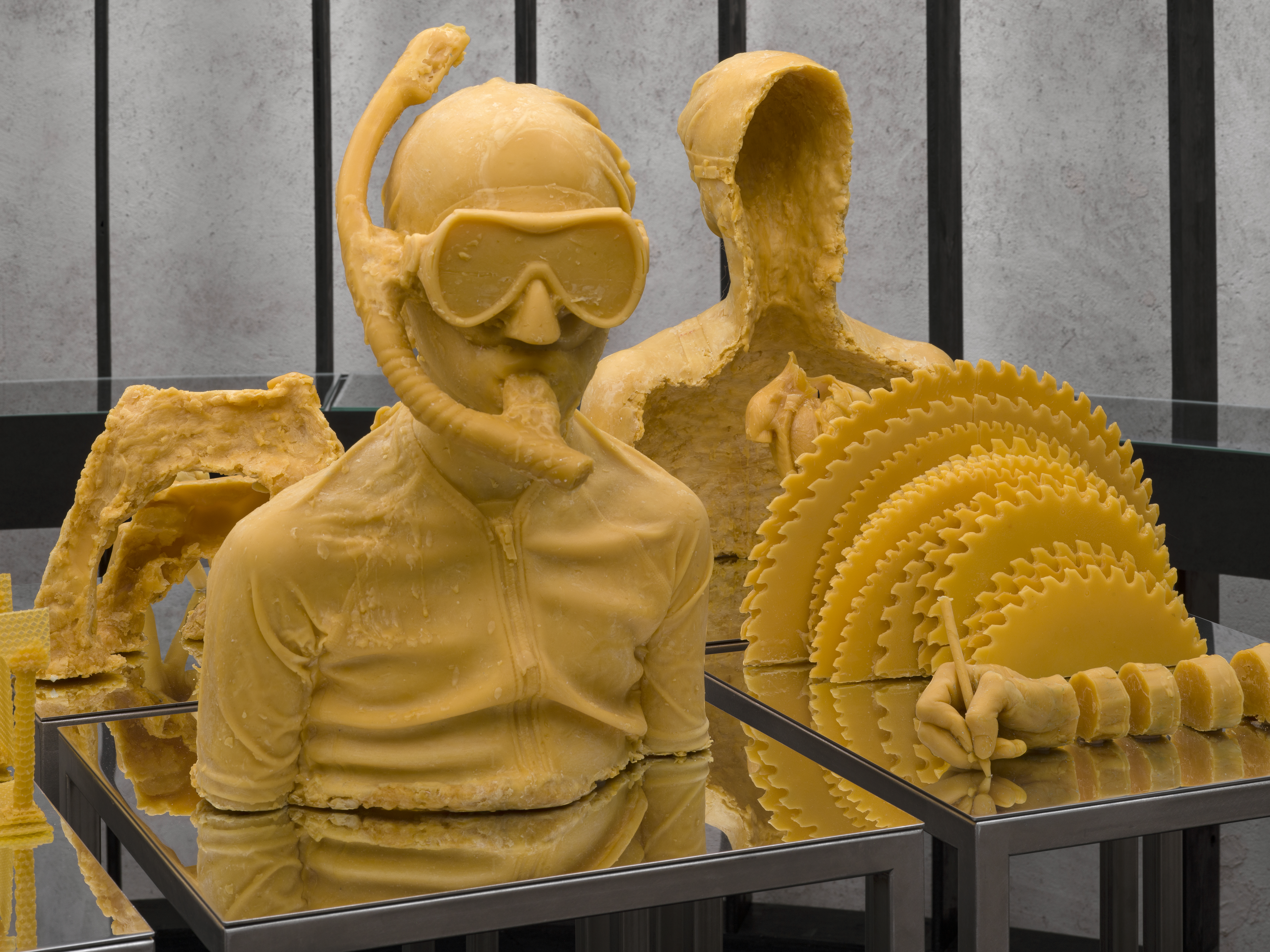














You can find an overview of ongoing debates with our journalists here . Please join us!
If you want to start a conversation about a topic raised in this article or want to report factual errors, email us at english@swissinfo.ch.